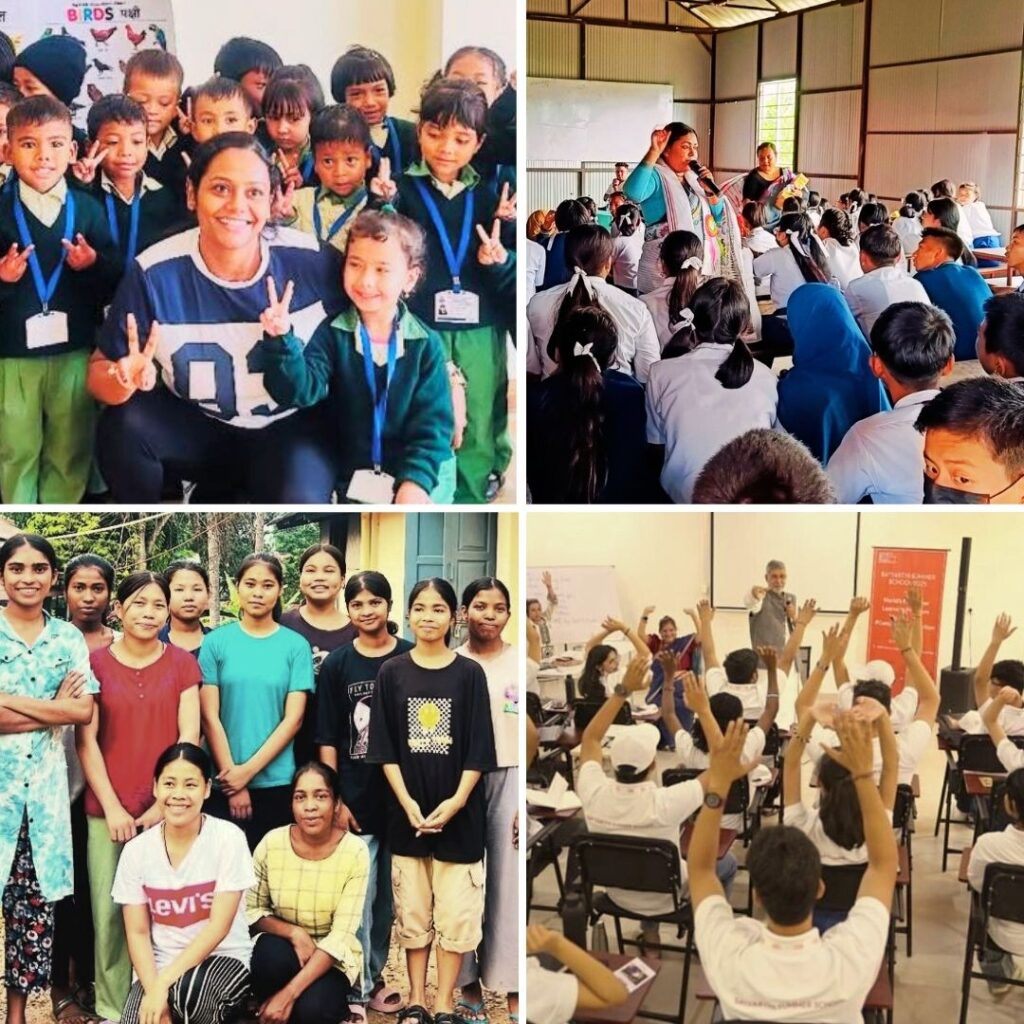India is progressing rapidly and taking gigantic strides towards financial dominance. Gone are the days when buying things was difficult. Today youngsters are able to afford beautiful homes and have abundant disposable income. Houses are also no longer basic but have beautiful paintings and sculptures adorning its walls. Wouldn’t we all love to have beautiful Indian paintings adorning our walls? Alas! only a few traditional artisans now practice these art forms as most of them have migrated to other jobs due to lack of opportunities.
Painting on one of the walls of a tribal artisan. If you want to paint your home/office with tribal art reach out to Maati Ghar.
India has a rich history and heritage of arts and crafts from different regions, along with a growing tourism industry. Combining the two can help empower the livelihoods in rural India while giving India’s crafts heritage the visibility it deserves at the same time.
Left to right : Virendra and Sandeep
Mr Virendra Kumar a young Industrial Engineer from NIT Kurukshetra decided to do something to empower the artisans from his home state of Jharkhand through Maati Ghar (https://www.facebook.com/maatikaghar/). He has been working tirelessly for the last two years and has invested all of his savings and his personal money to this cause. He has managed to register his initiative, Maati Ghar as a non-profit. He ran hobby classes and taught in a school to be able to generate funds to help the artisans. His commitment is unparalleled in that he left his well-paying job of a business analyst in an MNC to take up this cause.
Virendra documenting the work of artisans
Mr Virendra Kumar has used his experience as the Student President of Entrepreneurship Development Cell and his Diploma in Entrepreneurship and Business Management from EDII, Ahmedabad towards his social enterprise called Maati Ghar. Through his NGO Mr Virendra Kumar tries to solve the problems faced by artisans such as lack of training, finance and marketing of their products.
The modus of working
Mr Virendra picks up one particular art form and works with one artisan to create a sample of a saleable product and then aggressively markets them to create demand. This creates financial viability for the artisan and encourages others to pick up/restart the craft. Mr Virendra is very careful to ensure that they make a sustainable and rooted change on the ground and hence they extend the support to more artisans only after he has created sufficient demand to ensure that artisans find financial viability.
Work done so far:
Organized exhibitions across cities, Held workshops in schools, Conducted training sessions for rural women, Created an online portal for selling artworks, Created some beautiful products, and, are successfully running tribal art classes for children. Tribal painting classes in a school. Challenges faced
Apart from financial difficulties he faced resistance from his family as his parents didn’t like his idea of leaving a well paid secure job. It was tough to brave the financial difficulties and family resistance but his troubles did not end there he faced resistance and doubts from the very artisans for whom he was struggling since in the past other NGOs had not lived up to their promises of helping them. He feels there is a lot more to do as he is unable to help artisans from different parts of the state due to logistical, financial and time constraints. Mr Virendra says “Now, as I can work full time for the cause, I have decided to solve artisans problems one by one.”
A brief look at the art forms that Mr Virendra is trying to revive Sohrai Art: A matriarchal art inspired by rock arts of the regions of Hazaribagh, is done using only natural earth by women of the households during the festival of ‘Sohrai’ to worship the God of animals, “Pashupati” and welcome a good harvest. Khovar Art: A matriarchal art of sgraffito style inspired by rock arts in the regions of Hazaribagh, is done using natural earth (black and white) by women of the households during marriage ceremonies to welcome and bless a newly-wed couple.
Paitkar Art: An ancient storytelling tradition from East Singhbhum on scrolls of paper or cloth reflecting the day to day life of tribal people, stories of legends & mythologies is done using colours extracted from natural pigments. Jadupatua Art: An ancient storytelling tradition from Dumka on scrolls of paper or cloth depicting the stories of the afterlife, the creation of world, legends & mythologies from Hindu epics is done using colours extracted from natural pigments. “We have been able to successfully preserve the Paitkar Art by passing it to the hands of the next generation from one of the two remaining traditional practitioners of the art along with creating a steady source of income for him.” said Mr V…












